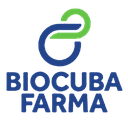Executive Secretary

VIII Simposio Internacional de Química y Ciencias Farmacéuticas
SIPN
IV Simposio Internacional “Química de productos naturales”
Resumen
Capraria biflora L. pertenece a la familia Scrophulariaceae. Esta planta carece de estudios científicos a nivel internacional que avalen sus potencialidades como agente gastroprotector, antinflamatorio y/o analgésico. Sin embargo, en la Universidad Central Marta Abreu de Las Villas, se han desarrollado estudios sobre su composición química y su farmacología. Dichos estudios han permitido obtener información cualitativa en la que destacan la presencia de fenoles y flavonoides, obtenidos por extracción de las hojas de esta especie; pero, hasta la presente investigación, no se había realizado la cuantificación en el extracto acuoso obtenido por decocción, infusión ni en el jarabe de Capraria biflora mediante técnicas espectrofotométricas. Por ello se desarrollaron y validaron dos técnicas de análisis para la cuantificación de fenoles y flavonoides: ensayo de Folin Ciocalteu y de Cloruro de Aluminio. Además, se realizó la caracterización físico-química del jarabe. Las técnicas espectrofotométricas resultaron ser lineales, precisas, exactas y sensibles. Dentro de los principales resultados se obtuvo que el contenido de fenoles en la decocción (15 mgEAG/gES) resultó ser superior al de la infusión (5 mgEAG/gES). Similar comportamiento presentó el contenido de flavonoides, siendo 2,5 mgEAG/gES en la decocción y 0,9 mgEAG/gES en la infusión. Los resultados para el jarabe fueron similares a los descritos en el Formulario Nacional de Fitofármacos y Apifármacos para otras especies vegetales y resultó novedosa su determinación cuantitativa. Este estudio permitió la seguridad de la presencia de fenoles y flavonoides, en formulaciones farmacéuticas económicas y de fácil obtención y en la cantidad necesaria para su indicación gastroprotectora.
Abstract
Capraria biflora L. belongs to the Scrophulariaceae family. This plant lacks international scientific studies that support its potential as a gastroprotective, anti-inflammatory and/or analgesic agent. However, at the Marta Abreu Central University of Las Villas, studies have been carried out on its chemical composition and pharmacology. These studies have allowed us to obtain qualitative information that highlights the presence of phenols and flavonoids, obtained by extraction of the leaves of this species; but, until the present investigation, quantification had not been carried out in the aqueous extract obtained by decoction, infusion or in the Capraria biflora syrup using spectrophotometric techniques. For this reason, two analysis techniques were developed and validated for the quantification of phenols and flavonoids: Folin Ciocalteu and Aluminum Chloride assay. In addition, the physical-chemical characterization of the syrup was carried out. Spectrophotometric techniques were found to be linear, precise, exact and sensitive. Among the main results, it was obtained that the phenol content in the decoction (15 mgEAG/gES) turned out to be higher than that of the infusion (5 mgEAG/gES). The flavonoid content presented a similar behavior, being 2.5 mgEAG/gES in the decoction and 0.9 mgEAG/gES in the infusion. The results for the syrup were similar to those described in the National Formulary of Phytopharmaceuticals and Apipharmaceuticals for other plant species and its quantitative determination was novel. This study allowed the certainty of the presence of phenols and flavonoids, in economical and easily obtained pharmaceutical formulations and in the necessary quantity for their gastroprotective indication.
Sobre el ponente

Leyanet Pérez Granela

Discussion




